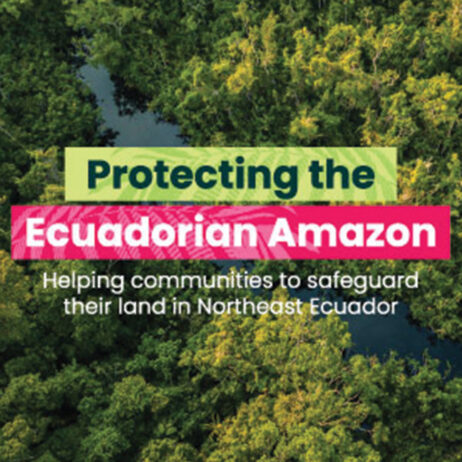
Gwynne Braidwood, WLT Conservation Programmes Officer
When WLT Conservation Programmes Officer, Gwynne Braidwood, returned from her visit to India and Nepal earlier this year, she felt deeply inspired by the power of community-centred nature conservation. Accompanying WLT Director of Conservation, Richard Cuthbert, Gwynne’s site visit involved excursions with Applied Environmental Research Foundation (AERF) in India and Koshi Tappu Kanchenjunga Biodiversity Education Livelihood Terra-Studio (KTK-BELT) in Nepal. Below she shares some poignant insights taken from her field notebook.
Being able to visit AERF and KTK-BELT was a pivotal moment for me, given that our interactions thus far had been behind screens separated by thousands of miles. I have been taking care of WLT’s Asian partners for a few years now, but this was my first opportunity to go on a site visit to Asia and I was excited to learn first-hand about the progress and experiences our partners face in their respective countries.
India’s sacred groves
The time spent with our Indian partner AERF was truly memorable, but one experience stood out: visiting sacred groves in the Western Ghats. India is estimated to have over 100,000 of these groves which have been traditionally protected by the local communities. They are religiously revered and, because of this, are havens of biodiversity; harbouring a mosaic of species with great conservation significance.
In 2018, AERF signed 10-year conservation agreements to secure 245 hectares of land in the Kule-Katavali-Fansavale corridor to protect forest habitat in the Western Ghats. Since then, WLT has been working with AERF to protect more of these groves and connect up corridors around these sites. They are truly amazing places; with some of the oldest and tallest trees in the region. Their age means they provide habitat for a rich array of plants, birds, and amphibians. The project area that AERF works in offers critical habitat to large iconic forest birds like Great Indian hornbill and Malabar Pied hornbill. It is also possible to find Endangered frog species here that are endemic to the Western Ghats.
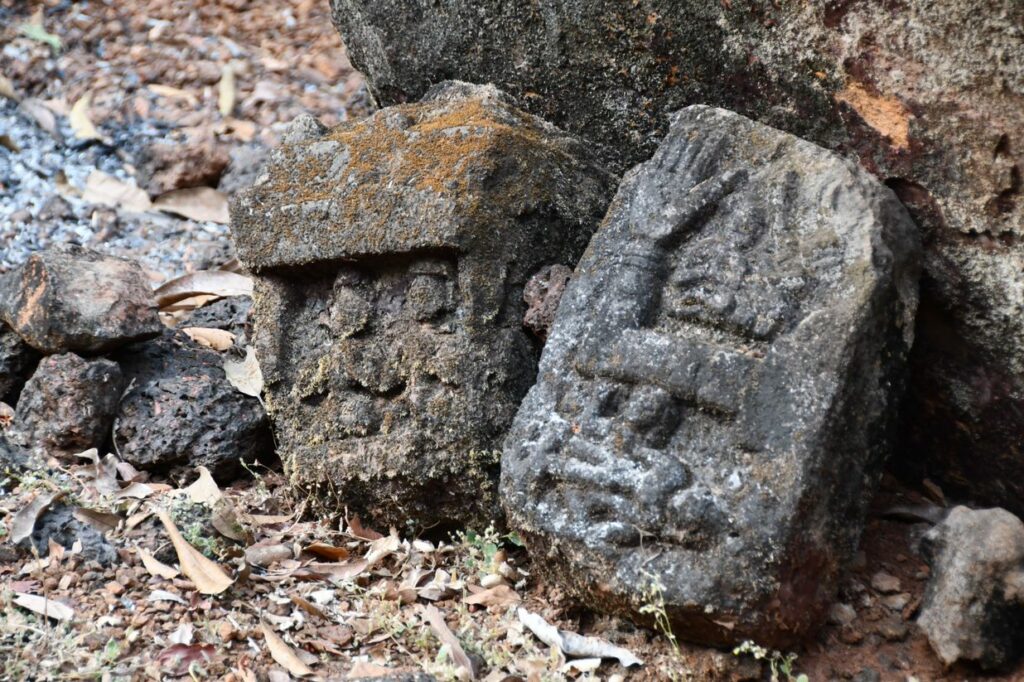
Carved stones near the sacred grove at Mandangad. Credit: Richard Cuthbert
Restoring the ecological integrity of these areas is an ongoing challenge. As young people increasingly migrate away from the region, there is fear of a gradual loss in cultural connection with these sacred groves. Additionally, agriculture and timber production are the main threats associated with tree felling and forest loss.
Fortunately, due to the experience and knowledge held by AERF, this issue was being addressed in multiple ways. Raising cultural awareness is a powerful tool at the forefront of AERF’s work. By recultivating the connection with the groves and their significance for the people and ecosystems in this precious landscape, further loss of forests can be averted. The intact sacred groves are vital islands in what is a fragmented tapestry of forest habitat. By empowering local people to reclaim a sense of autonomy over the land there is hope that this will lead to the restoration of this spectacular forest landscape.
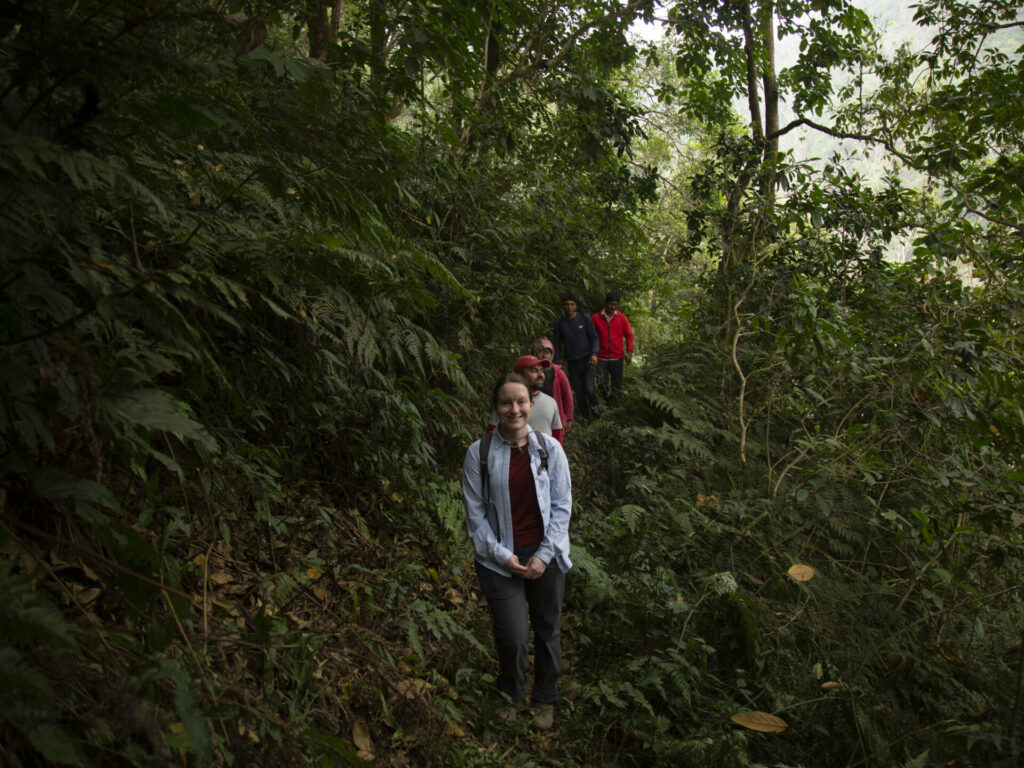
Gwynne on one of several forest walks in Yangshila village with Forest Guardians. Credit: WLT.
Learning from the ground up in Nepal
Arriving in Nepal to meet KTK-BELT and their in-country staff, we were soon taken to the Yangshila region of the eastern Siwalik Foothills of Nepal. Here, I was introduced to part of the landscape where WLT is supporting KTK-BELT to establish 31,284 hectares of a community protected area known as an ‘ICCA’ (Indigenous and Community Conservation Area). While the land is managed by the local indigenous communities, they have technical and financial support from KTK-BELT and other partners.
The ICCA in Yangshila is part of an impressive broader project by KTK-BELT: to create a vertical corridor of ICCAs from Koshi Tappu in the lowlands to Kangchenjunga in the Himalayas, eastern Nepal, covering 8,000 metres of elevation – from thick, old-growth forests in the lowlands of the Himalayas, all the way to Koshi Tappu Wildlife Reserve in the flatlands. KTK-BELT are also developing a fascinating ‘vertical university’ model, which involves local farmers becoming ‘professors’ of a living classroom, sharing indigenous knowledge while also conserving threatened species and landscapes.
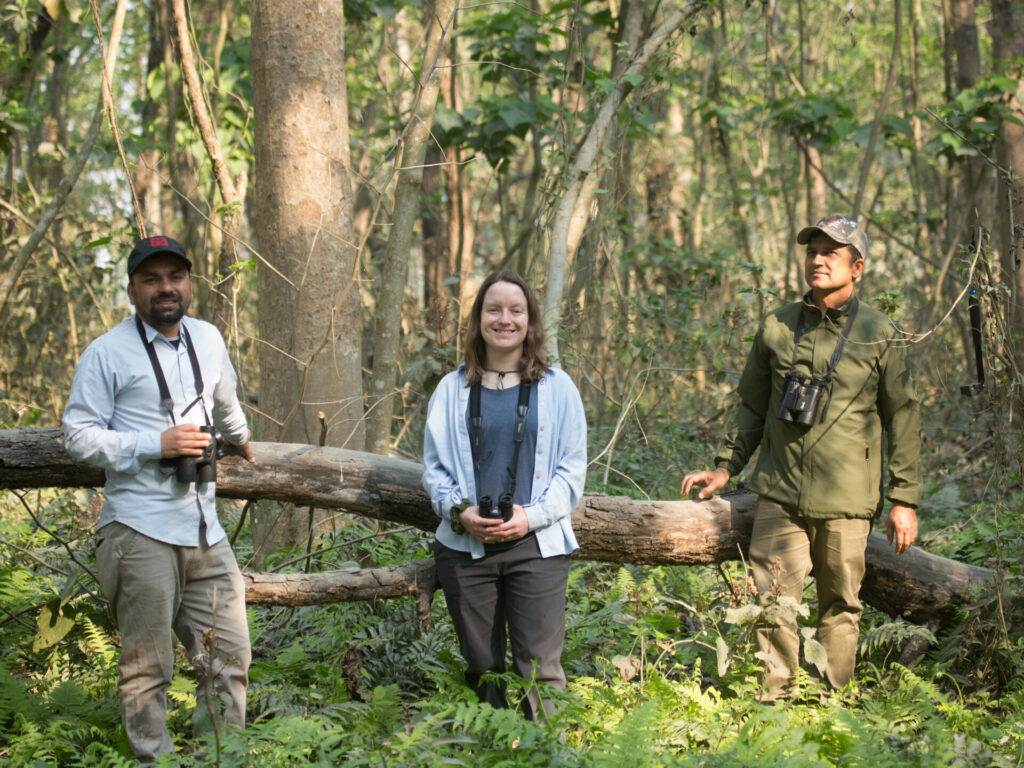
Gwynne Braidwood with Mohan Pandey (left) KTK-BELT and Anish Timsina (right) Koshi Tappu Learning Grounds Credit: WLT
Forest guardians and pangolin burrows
During my visit to Nepal, I also had the pleasure of meeting Youth Fellows who are part of the BELT Fellows programme run by KTK-BELT. Through this programme, 60 people aged between 25-32 are recruited and trained to lead in various areas of KTK-BELT’s project. The youth fellows gain skills such as design, IT, environmental policy, and eco-tourism and they all had taken on roles according to their own personal interests. For example, I recall one person with a fondness of photography, so KTK-BELT helped her hone her camera skills. We saw the effects of this in action as they darted ahead of us through the forest taking numerous photos of us all!
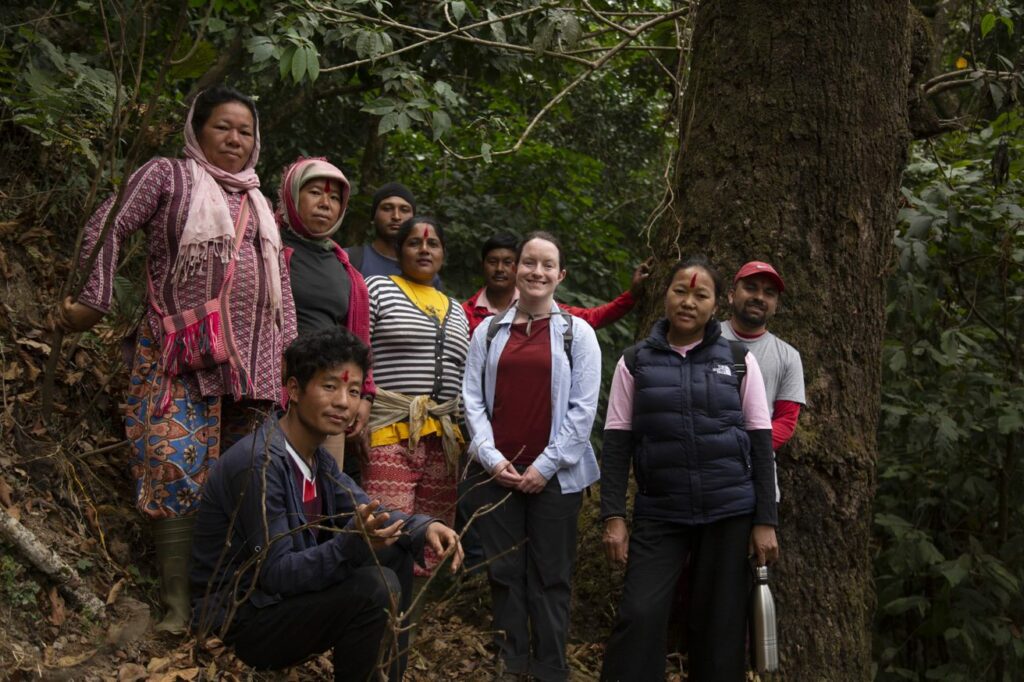
Forest Guardians and Gwynne Braidwood during forest walk in Yangshila. Credit: WLT
On another day full of activities, I was able to meet with several community forest user groups. I was humbled as I was welcomed into several people’s homes to learn about what these forests meant to them and their community. As I walked through one forest near Sadhutar village that had been clear felled around 20 years prior, I noticed the Sal trees were the dominant species. Though native to the region, they have a higher capacity to regenerate which allows them to outcompete other native species in certain areas. This had led to a decline in tree species diversity in the forest which doesn’t providing good habitat for the local flora and fauna.
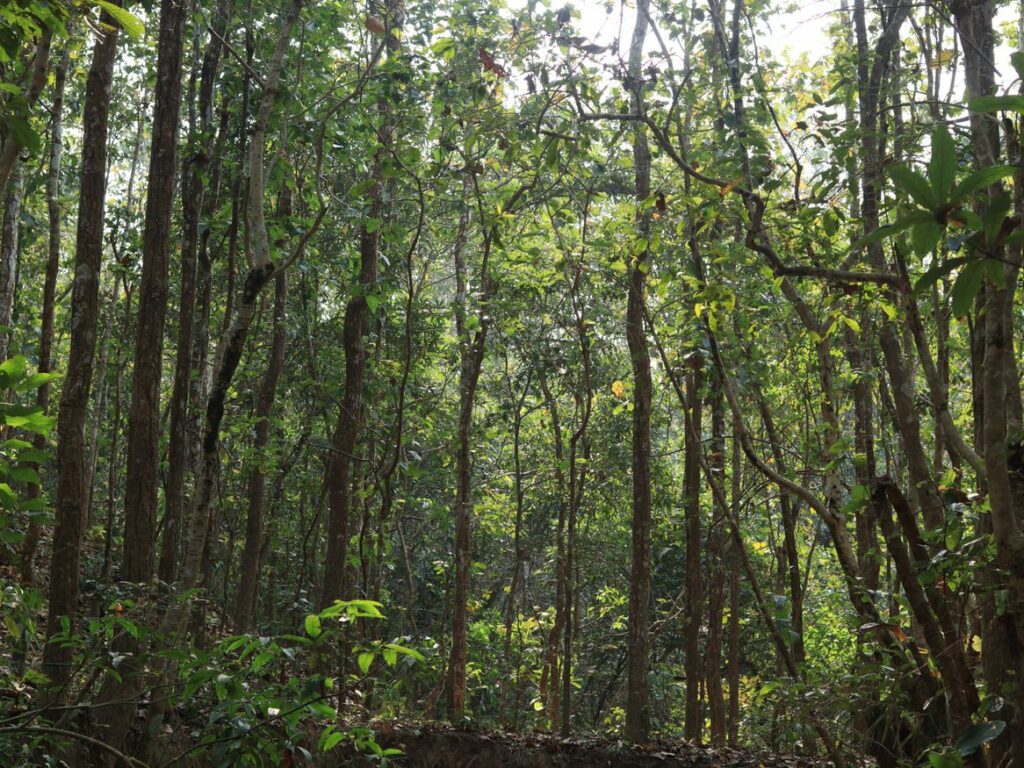
A dense Sal forest. Credit: Gwynne Braidwood, WLT
As we moved through the landscape into more diverse forest systems, I was transported to the children’s books I read when I was a young girl. Immersed in a dense, magically forested world unlike anything I have experienced in the UK, the feeling intensified when we stumbled across pangolin burrows!
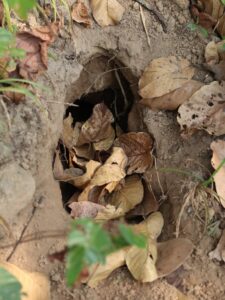
A Pangolin burrow. Nepal is home to both Chinese Pangolins (Critically Endangered) and Indian Pangolins (Endangered). Credit: Gwynne Braidwood, WLT
Seeing these burrows made me reflect on how the health of this forest is largely down to the vital work of forest user groups who manage and regulate the use of natural resources within the forest to ensure its diversity is maintained. The stark contrast between the areas which had been previously clear felled and dominated by Sal trees emphasised the importance of the work of KTK-BELT. They are determined to make this intact habitat sweep across the entire region rather than existing in fragmented patches.
Lessons to the world
During our visit to India and Nepal I was struck with the gratitude expressed to us for the support that WLT offers our partners. This presented a moment to then share my own reflections, as I recognised how grateful we are as an organisation, and as an individual, for everything our partners do, as well as the people who enable us fund these projects. As we navigate the sixth mass extinction, this vital work cannot happen without involving people, particularly local people, indigenous people, women, and youth. Their tireless enthusiasm for keeping our planet healthy is for us all.
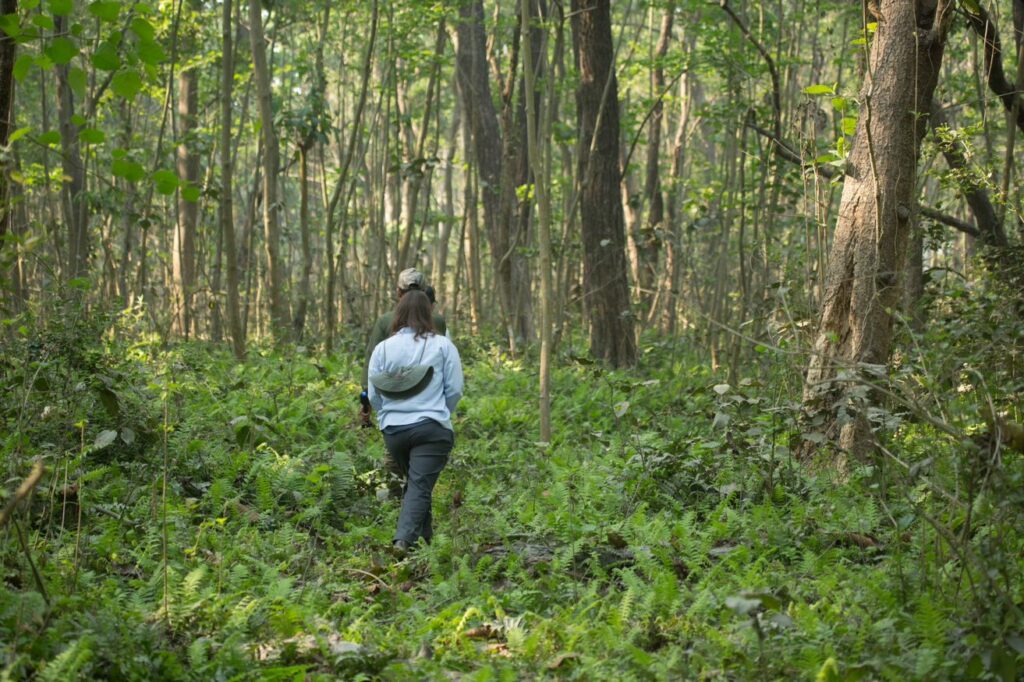
Gwynne walks through a forest in Koshi Tappu core area, Nepal.

